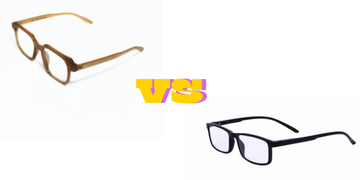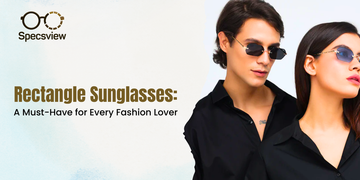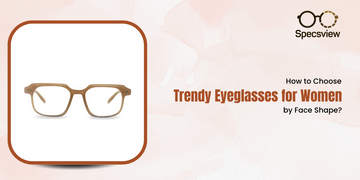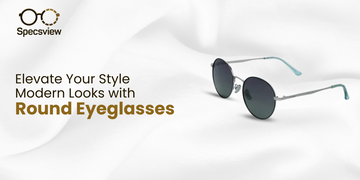What is the Difference Between Computer Glasses & Reading Glasses ?
by Prakul Gupta on Jul 06, 2024
Choosing between computer glasses and reading glasses can be confusing. Each type serves a different purpose and is designed for specific needs. In this blog, we'll explain difference between computer glasses and reading glasses to help you figure out which is right for you. Whether you spend a lot of time on screens or enjoy reading, understanding these differences can improve your comfort and eye health.
Difference Between Computer Glasses & Reading Glasses
Computer glasses help in reducing eye strain and discomfort from looking at screens for long periods. They are designed to improve visual comfort and clarity when using computers, tablets, and smartphones. These glasses have special lenses that filter out blue light, which screens emit and can cause eye fatigue. They also have an anti-reflective coating to reduce glare from screens and lighting.
By wearing computer glasses, you can work or play on digital devices for longer periods without experiencing as much eye strain, headaches, or blurred vision. They are especially useful for people who spend a lot of time in front of screens, such as office workers and gamers.
Whereas,
Reading glasses help people see small text and details up close. They are mainly used by those who have trouble focusing on nearby objects, usually due to aging. These glasses have magnifying lenses that make text and objects look larger and clearer, making it easier to read books, newspapers, and magazines.
Reading glasses are typically used by people over 40 who experience presbyopia, a common condition where the eye's lens loses flexibility. They are widely available in various strengths at pharmacies, drugstores, and eyewear shops. You can also get custom-made reading glasses with a prescription from an eye doctor.
They come in different styles and can have features like bifocal or progressive lenses for added convenience. Reading glasses provide a simple and effective way to improve near vision and make reading more comfortable.
|
Feature |
Computer Glasses |
Reading Glasses |
|
Purpose |
Reduce eye strain from screens |
Assist in reading printed materials |
|
Lens Type |
Anti-reflective, blue light blocking |
Magnifying lenses |
|
Distance Focused |
Intermediate distance (20-26 inches) |
Close distance (12-16 inches) |
|
Use Case |
Computer, tablet, smartphone use |
Reading books, newspapers, magazines |
|
Eye Strain Reduction |
Yes, specifically for digital screens |
Yes, for reading small text |
|
Blue Light Protection |
Yes |
No |
|
User Age Range |
All ages, especially adults and teens |
Primarily adults and seniors |
|
Typical Wearers |
Office workers, gamers, frequent screen users |
Book readers, elderly, near-sighted individuals |
|
Lens Customization |
Often customized for specific screen use |
Usually standardized magnifications |
|
Frame Design |
Lightweight and ergonomic for long-term wear |
Variety of styles, often simple and practical |
|
Optical Quality |
High optical clarity for screen use |
High optical clarity for close-up tasks |
|
Comfort |
Designed for extended screen time |
Comfortable for reading sessions |
|
Availability |
Specialized eyewear stores and online |
Widely available in pharmacies and eyewear stores |
|
Cost |
Generally higher due to specialized lenses |
Typically more affordable |
|
Impact on Vision |
Reduces digital eye strain and headaches |
Eases strain from reading small text |
|
Prescription |
Can be custom-made with prescription lenses |
Available as both prescription and non-prescription |
|
Maintenance |
Requires regular cleaning, anti-reflective coating care |
Simple cleaning, similar to regular glasses |
|
Longetivity |
Durable, designed for daily use |
Durable, depending on use and care |
|
Style Options |
Modern, tech-friendly designs |
Classic, traditional designs |
In Short
Understanding the difference between computer glasses and reading glasses is crucial for choosing the right eyewear. Computer glasses help reduce eye strain from screens with special lenses, while reading glasses magnify text for easier reading up close. By knowing these distinctions, you can make an informed decision based on your specific needs—whether it's for digital comfort or enhancing reading clarity. Invest in the right glasses to protect your eyes and improve your daily tasks.





